Tips for Painting with Water-Mixable Oils
Are you ready to dive into the vibrant world of water-mixable oils? These innovative paints offer a unique blend of traditional oil characteristics with the convenience of water solubility. Whether you’re a seasoned artist or just starting out, exploring water-mixable oils can open up a realm of creative possibilities. In this article, we’ll guide you through essential tips to not only enhance your painting skills but also to help you enjoy the process. So, grab your brushes and let’s get started!
Water-mixable oils are a game changer in the painting community. Unlike traditional oils, which require solvents for thinning and cleaning, these paints can be mixed with water. This means clean-up is a breeze! Imagine finishing a painting and simply rinsing your brushes under the tap—no more harsh chemicals! The composition of water-mixable oils includes a special emulsifier that allows them to mix with water, giving you the same rich texture and vibrancy of oil paints without the mess. This not only makes them more accessible for beginners but also adds a layer of convenience for experienced artists.
To make the most out of your water-mixable oils, having the right tools is crucial. You wouldn’t try to bake a cake without the right ingredients, right? The same principle applies to painting. Here’s a quick rundown of what you’ll need:
- Brushes: Look for synthetic brushes designed specifically for water-mixable oils. They hold water well and maintain their shape.
- Palettes: Choose a palette made from materials like glass or acrylic for easy mixing and cleanup.
- Mediums: Water-mixable mediums can help you achieve different effects and alter drying times.
When it comes to brushes, not all are created equal. For water-mixable oils, you’ll want to focus on synthetic brushes. These brushes are not only durable but also designed to hold water and paint effectively. Here’s a quick look at the types of brushes you should consider:
| Brush Type | Best For |
|---|---|
| Flat Brushes | Bold strokes and filling larger areas |
| Round Brushes | Detail work and fine lines |
| Filbert Brushes | Soft edges and blending |
The palette you choose can significantly impact your painting experience. A good palette should allow for easy mixing and cleanup. Consider using a glass or acrylic palette, as they are easy to clean and won’t absorb paint. Remember, a clean palette means cleaner colors!
Understanding the role of mediums and additives can elevate your painting game. Water-mixable mediums can alter the texture and drying times of your paints. For instance, a medium can make your paint more fluid, allowing for smoother blending. Experiment with different mediums to see how they affect your work—it's like adding spices to a dish!
Blending and layering are essential techniques in oil painting, and water-mixable oils make it easier than ever. To blend colors seamlessly, start by applying a base layer of paint and then use a clean, damp brush to gently mix the edges. This will create a soft transition between colors. For layering, remember to let each layer dry before applying the next. This not only adds depth but also allows you to build up textures and details.
One of the key advantages of water-mixable oils is their easy cleanup. After your painting session, simply rinse your brushes and tools with warm water and soap. Make sure to clean your palette as well, as leftover paint can dry and become difficult to remove. Keeping your tools clean will ensure they last longer and perform better.
Proper storage of your water-mixable oils can prolong their lifespan. Store your paints in a cool, dry place away from direct sunlight. If you have opened tubes, consider sealing them tightly to prevent them from drying out. You can also use airtight containers for leftover paint. Think of it as keeping your paints in a cozy home, ready for your next creative adventure!
Every artist makes mistakes, but learning from them is key. Here are some common pitfalls to watch out for:
- Using too much water can dilute your paint and reduce vibrancy.
- Neglecting to clean your brushes properly can lead to bristle damage.
- Skipping the drying time between layers can cause muddy colors.
By being aware of these mistakes, you can enhance your painting experience and achieve stunning results.
Q: Can I use traditional oil painting techniques with water-mixable oils?
A: Absolutely! Many traditional techniques can be adapted for water-mixable oils, just remember to adjust your approach for the unique properties of the paint.
Q: Do I need special brushes for water-mixable oils?
A: While you can use regular brushes, synthetic brushes are recommended as they work best with the water-soluble nature of these paints.
Q: How do I know when my painting is dry?
A: Water-mixable oils typically dry faster than traditional oils, but it’s best to check the manufacturer's instructions for specific drying times.
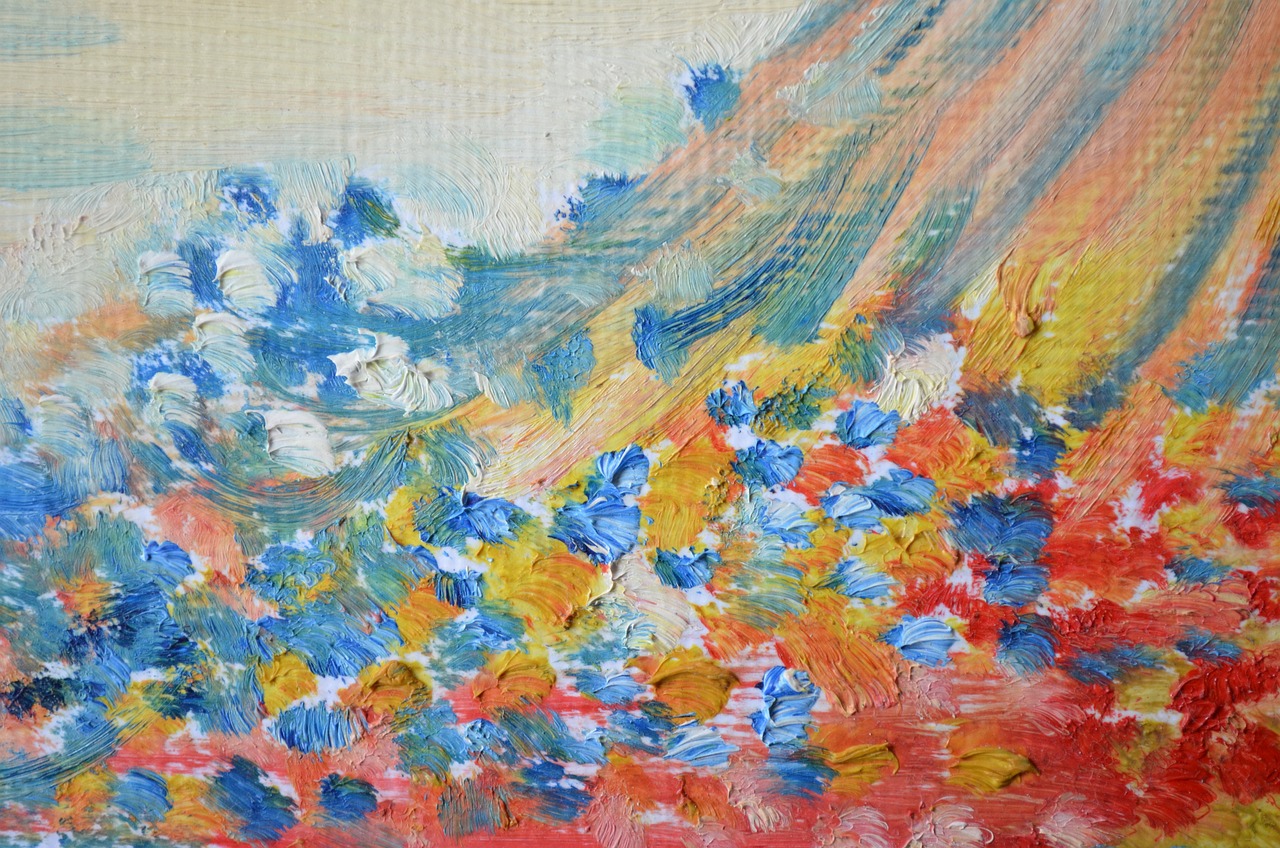
Understanding Water-Mixable Oils
Water-mixable oils are a fascinating innovation in the world of painting, blending the rich, vibrant qualities of traditional oil paints with the convenience of water-solubility. Imagine being able to create stunning artwork without the hassle of harsh solvents—sounds amazing, right? This unique medium allows artists to enjoy the best of both worlds: the beautiful, buttery texture of oil paints combined with the easy cleanup that comes from using water. This means you can spend more time painting and less time worrying about the mess!
So, what exactly makes water-mixable oils different from conventional oils? At their core, these paints are formulated with a special binder that allows them to mix with water instead of requiring turpentine or other solvents. This innovative formulation not only makes them safer to use indoors, but it also opens up a new realm of possibilities for artists who may have been hesitant to work with traditional oils due to the fumes and cleanup challenges. With water-mixable oils, you can simply use water to thin the paint, clean your brushes, and rinse your palette, making the entire process much more user-friendly.
One of the standout advantages of water-mixable oils is their versatility. Whether you’re a beginner or a seasoned artist, these paints can adapt to various techniques and styles. They can be used straight from the tube for a thick, impasto effect, or thinned with water for a more fluid application. Additionally, they can be mixed with traditional oil paints, allowing you to experiment and expand your artistic repertoire. However, it’s essential to note that while they offer many benefits, they also require a different approach compared to conventional oils. Understanding their properties will help you unlock their full potential.
For those who love to experiment, water-mixable oils can be a playground of textures and finishes. They dry slower than acrylics, giving you ample time to blend and layer colors, which is a significant advantage when working on intricate details or achieving smooth transitions. Plus, the drying time can vary based on the thickness of application and environmental conditions, allowing for a range of creative possibilities. As you delve into this medium, you'll discover that mastering water-mixable oils can lead to stunning results that rival traditional oil paintings.
In summary, water-mixable oils are not just a substitute for traditional oils; they are a unique medium that offers a multitude of benefits. With their ease of use, versatility, and the ability to create beautiful artwork without the need for toxic solvents, they are an excellent choice for artists of all levels. So, why not take the plunge and explore this exciting medium? You might just find your new favorite way to paint!
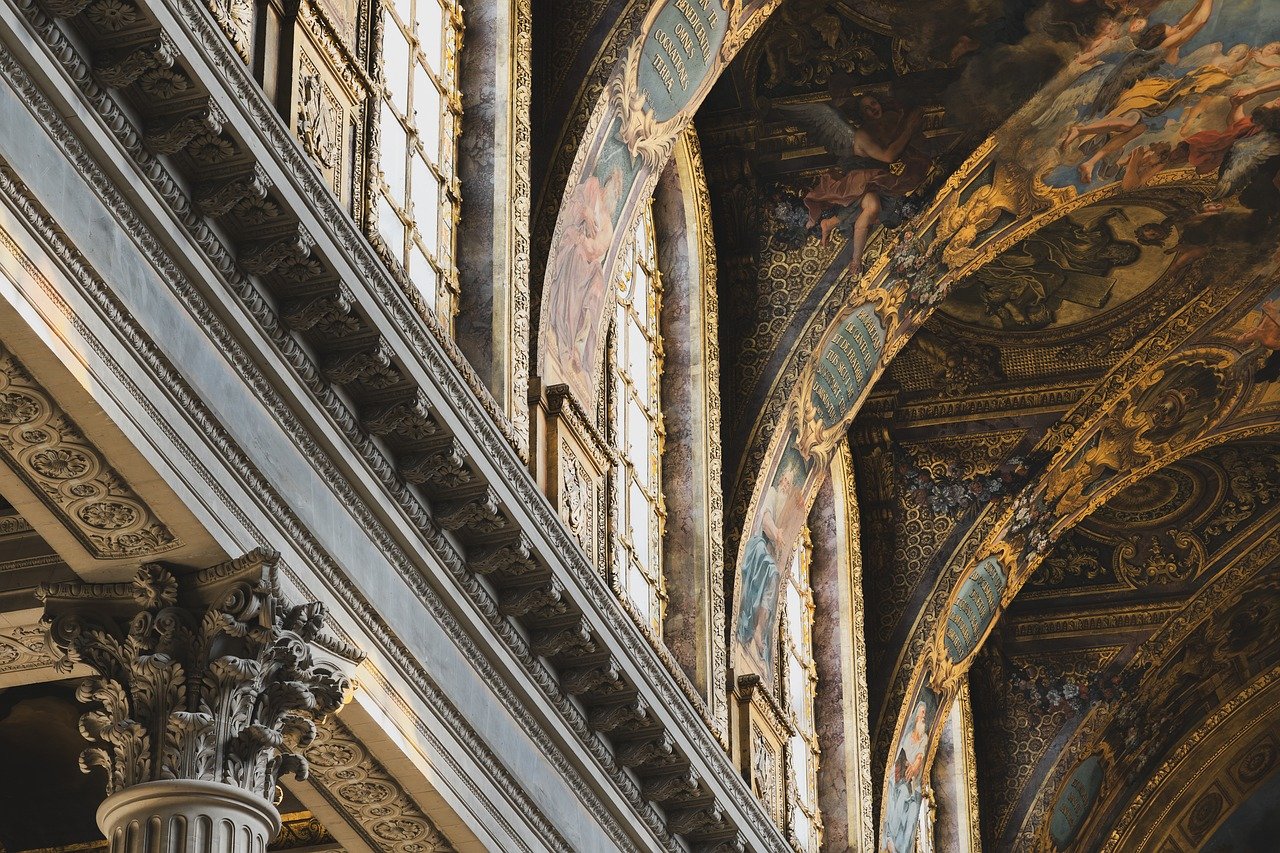
Essential Tools and Materials
When diving into the world of water-mixable oils, having the right tools and materials can make all the difference between a frustrating experience and a joyous one. Think of it like cooking; you wouldn't want to whip up a gourmet meal without the proper utensils, right? Similarly, the success of your painting largely depends on the quality and suitability of your tools. So, let’s explore the essentials that will set you up for success.
First and foremost, the choice of brushes is critical. A variety of brushes can help you achieve different textures and effects in your artwork. For water-mixable oils, you’ll want to consider both synthetic and natural bristle brushes. Synthetic brushes are often more affordable and easier to clean, making them a popular choice for beginners. They come in various shapes, including flat, round, and filbert, each serving a unique purpose. On the other hand, natural bristle brushes can hold more paint and provide a more fluid application, which is perfect for blending. Here’s a quick table summarizing the types of brushes and their uses:
| Brush Type | Shape | Best For |
|---|---|---|
| Synthetic | Flat | Bold strokes and washes |
| Synthetic | Round | Detail work and fine lines |
| Natural Bristle | Filbert | Soft edges and blending |
Next, let’s talk about palettes. The right palette can enhance your painting experience significantly. You can choose from materials like glass, wood, or even disposable paper palettes. Each has its own advantages: glass palettes are easy to clean, wooden palettes can absorb some moisture, and paper palettes are convenient for quick setups and cleanups. Choose one that suits your painting style and preferences.
Now, onto mediums and additives. Understanding how these can affect your painting is crucial. Water-mixable oils can be thinned with water, but using specific mediums designed for these paints can enhance your work. For instance, a medium like linseed oil can help increase gloss and flow, while a water-mixable gel medium can add texture. Remember, the right medium can alter drying times and the final appearance of your artwork, so choose wisely!
Lastly, don’t forget about your cleaning supplies. One of the significant advantages of water-mixable oils is the ease of cleanup. You can use soap and water to clean your brushes and palettes, but having a dedicated brush cleaner can make the process even smoother. Keeping your tools in top condition will ensure they last longer and perform better, so invest in some quality cleaning supplies.
In summary, having the right tools and materials is key to unlocking your potential with water-mixable oils. By selecting high-quality brushes, palettes, mediums, and cleaning supplies, you’ll not only improve your painting experience but also enhance the quality of your artwork. So, gear up, and let your creativity flow!
- Can I use regular oil paints with water-mixable mediums? No, regular oil paints are not designed to be mixed with water and can cause issues with drying and texture.
- How do I clean my brushes after using water-mixable oils? Simply rinse them with water and soap; there’s no need for harsh solvents!
- Are there any specific brands of water-mixable oils you recommend? There are several great brands available, such as Winsor & Newton and Holbein, known for their quality and performance.
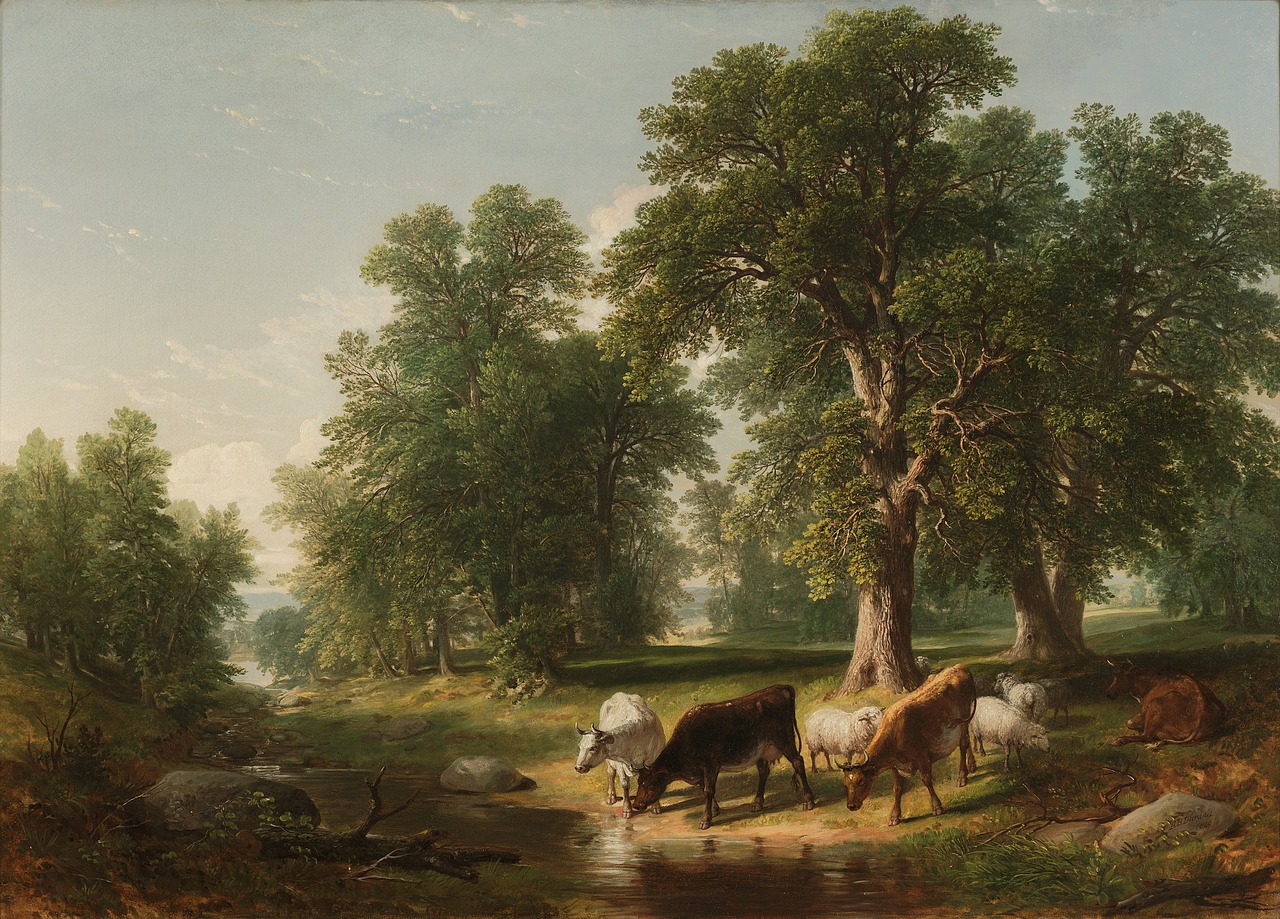
Brush Types for Water-Mixable Oils
When it comes to painting with water-mixable oils, the type of brush you choose can make a *world of difference* in your technique and the overall outcome of your artwork. Just like a chef needs the right knives to create a culinary masterpiece, artists require the perfect brushes to bring their vision to life. There are various types of brushes available, each designed for specific techniques and effects. Understanding these brush types is essential for mastering water-mixable oils.
First off, let’s talk about synthetic brushes. These brushes are often made from nylon or polyester and are ideal for water-mixable oils due to their ability to hold water and paint effectively. They come in various shapes, such as flats, rounds, and filberts, which can be used for different applications. For instance:
- Flat brushes are perfect for bold strokes and filling in large areas.
- Round brushes are great for detail work and fine lines.
- Filbert brushes combine the features of both flat and round, making them versatile for blending and creating soft edges.
Another popular option is natural hair brushes, which are often made from materials like squirrel or hog bristle. While these brushes can be used with water-mixable oils, it's important to note that they may require additional care to maintain their shape and performance. Natural hair brushes have a unique ability to hold more paint and water, which can be advantageous for certain techniques but may also lead to more complicated cleanup.
When selecting brushes, consider the size of the brush as well. Smaller brushes are excellent for detail work, while larger brushes are better for broader strokes and backgrounds. A good rule of thumb is to have a variety of sizes on hand, allowing you to switch between techniques seamlessly as your painting evolves.
In addition to the type and size, the shape of the brush plays a crucial role in the effects you can achieve. For example, a fan brush can create texture and foliage effects, while a mop brush is fantastic for softening edges and blending colors. Experimenting with different shapes can open up new avenues for creativity, allowing you to discover what works best for your style.
Lastly, always remember to invest in quality brushes. While it might be tempting to go for the cheapest option, high-quality brushes will last longer, provide better control, and ultimately enhance your painting experience. Consider checking out brands that specialize in water-mixable oil brushes, as they often have products specifically designed for this medium.
In conclusion, the right brushes are vital for anyone looking to excel in painting with water-mixable oils. By understanding the various types, sizes, and shapes of brushes available, you can select the perfect tools to help you create stunning works of art. So, grab your brushes, and let your creativity flow!
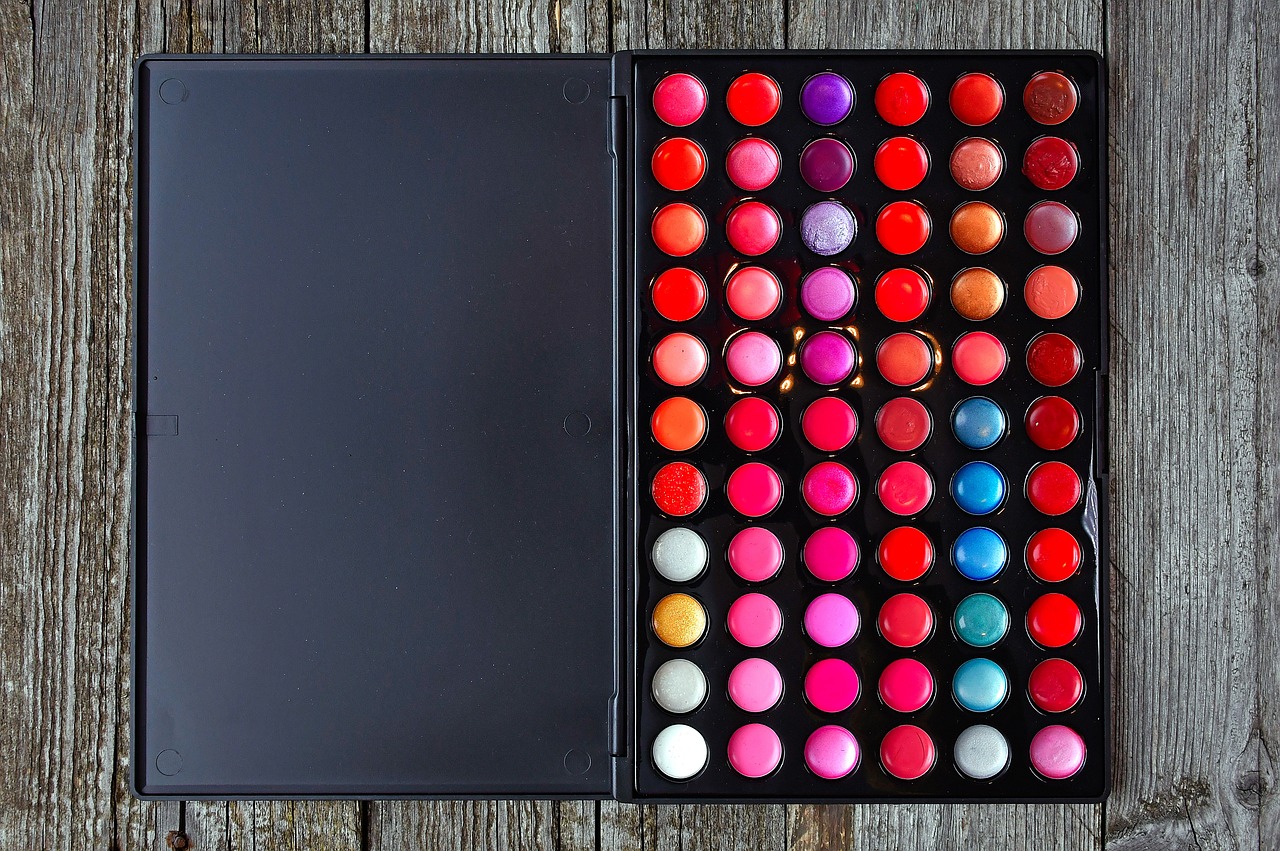
Palette Choices
When it comes to painting with water-mixable oils, selecting the right palette can dramatically enhance your creative process. The palette serves as your workspace, where colors blend, and ideas come to life. So, what should you consider when choosing a palette? First, think about the material. Palettes can be made from various substances, each offering unique benefits. For example, plastic palettes are lightweight and easy to clean, making them a popular choice among beginners. However, wooden palettes can soak up some paint, allowing for a more organic blending experience. It’s like choosing between a cozy couch and a sleek modern chair—each has its own charm!
Next, size matters! A larger palette gives you more room to mix colors, which is particularly useful when working with multiple shades. But if you're on the go or have limited space, a smaller palette might be the way to go. Just remember, a cramped workspace can lead to a chaotic painting session, much like trying to cook a gourmet meal in a tiny kitchen!
Another factor to consider is the palette's color. A white palette can help you see the true colors of your paints, while a gray or black palette can provide a different perspective, especially when working with vibrant hues. This is akin to how a white canvas can make your colors pop, while a dark background can create a dramatic effect.
To sum it up, here’s a quick overview of popular palette materials and their benefits:
| Palette Material | Benefits |
|---|---|
| Plastic | Lightweight, easy to clean, affordable |
| Wood | Durable, absorbs some paint for blending, traditional feel |
| Glass | Non-porous, easy to clean, allows for smooth mixing |
| Paper | Disposable, convenient for quick sketches, no cleanup required |
Ultimately, the best palette for you will depend on your personal preferences and painting style. Consider experimenting with different types to find what feels right. After all, your palette is not just a tool; it’s a part of your artistic journey!
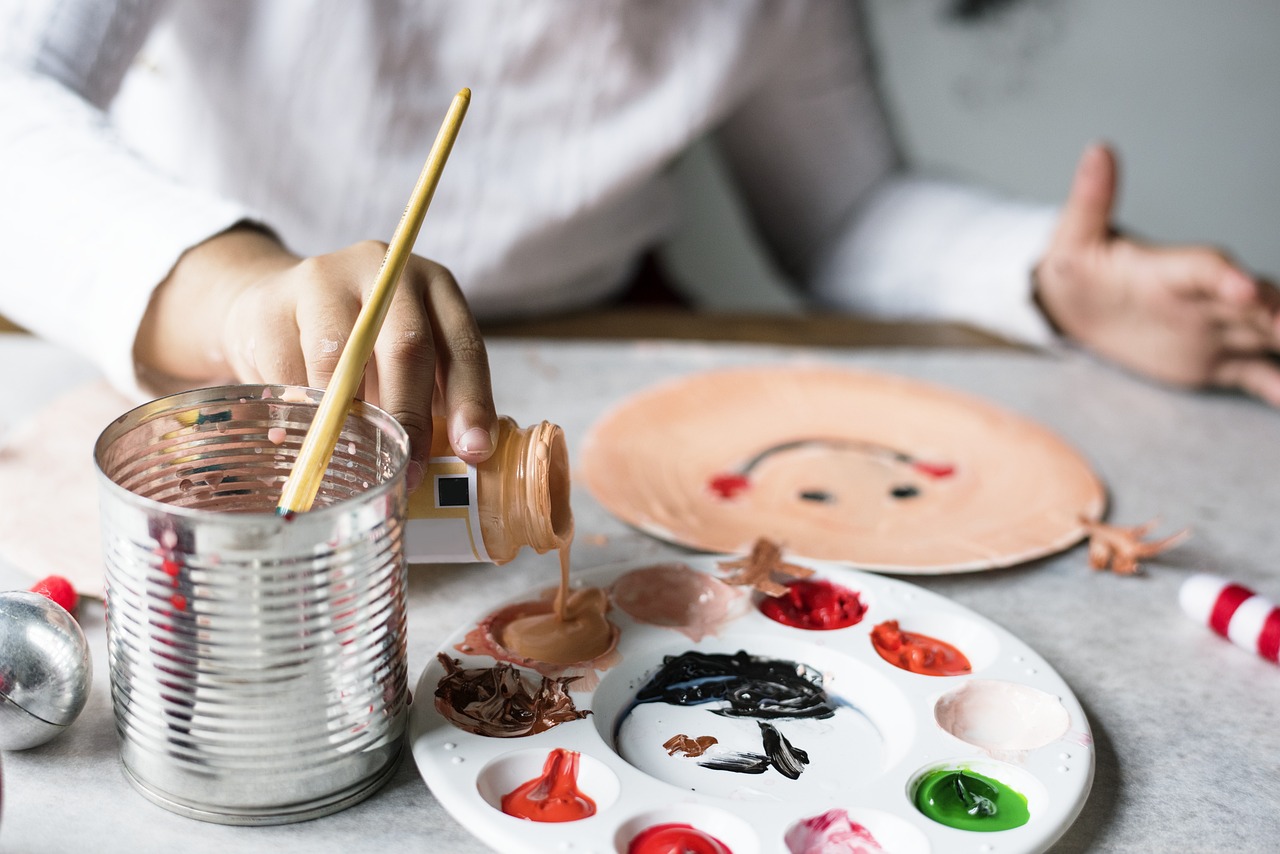
Mediums and Additives
When it comes to painting with water-mixable oils, understanding the role of mediums and additives is essential for achieving the desired effects in your artwork. These substances can transform your painting experience, enhancing texture, altering drying times, and even modifying the finish of your work. So, what exactly are these mediums, and how can they elevate your painting game?
Water-mixable oil paints are designed to be thinned and cleaned up with water, making them a favorite among artists who prefer a less toxic and more convenient medium. However, to unlock their full potential, incorporating the right mediums and additives is key. Here are a few popular options:
- Water-Mixable Linseed Oil: This medium can improve the flow and transparency of your paints, allowing for beautiful glazing effects. It also helps to maintain the integrity of the colors without compromising their vibrancy.
- Water-Mixable Alkyd Medium: This additive speeds up the drying time of your paints, making it perfect for artists who want to work quickly. It also enhances the glossiness of the finish, giving your artwork a professional look.
- Water-Mixable Gel Medium: If you're looking to add texture to your paintings, a gel medium is your best friend. It can thicken your paint, allowing for impasto techniques and creating stunning three-dimensional effects on the canvas.
Using these mediums not only allows for more versatile techniques but also helps in achieving a variety of finishes, from matte to glossy. It's important to note that the proportions in which you mix these mediums with your paints can significantly affect the outcome. A good rule of thumb is to start with small amounts and gradually increase until you reach your desired consistency. Remember, the goal is to enhance your work, not overpower it!
Another essential aspect of using mediums is understanding how they interact with water. While water-mixable oils are designed to be water-soluble, adding too much water can dilute the pigments and affect the overall quality of your paint. Therefore, it's crucial to find the right balance. Experimenting with different combinations will not only help you discover your personal style but also ensure that your artistic vision comes to life on the canvas.
In conclusion, mediums and additives play a crucial role in the world of water-mixable oils. By choosing the right products and understanding their properties, you can enhance your painting techniques, create stunning visual effects, and enjoy a more satisfying artistic experience. So, don't shy away from experimenting – your canvas is waiting!
Q: Can I use traditional oil mediums with water-mixable oils?
A: It's best to stick with mediums specifically designed for water-mixable oils to ensure compatibility and avoid unwanted results.
Q: How do I clean my brushes after using water-mixable oils?
A: Simply rinse your brushes in warm soapy water, and you’ll find that they clean up much easier than traditional oils.
Q: Do water-mixable oils have the same drying time as traditional oils?
A: Generally, water-mixable oils dry slower than acrylics but can dry faster than traditional oils, especially when mixed with fast-drying mediums.
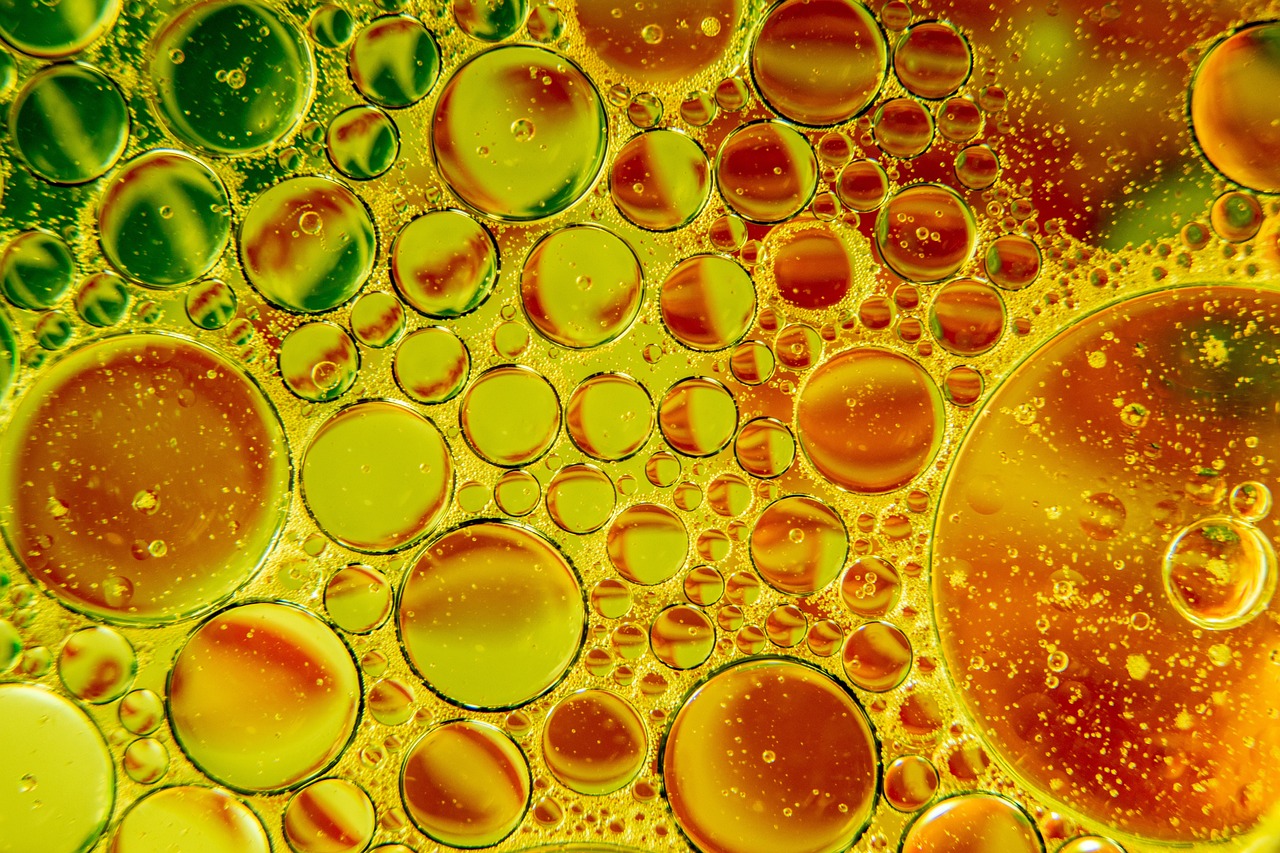
Techniques for Blending and Layering
When it comes to painting with water-mixable oils, mastering the techniques of blending and layering can truly transform your artwork. Blending allows you to create smooth transitions between colors, while layering adds depth and dimension to your pieces. The beauty of water-mixable oils lies in their ability to mimic traditional oils but with the added benefit of easy cleanup. So, how do you effectively blend and layer these versatile paints?
First, let's talk about blending. A key technique is to use a wet-on-wet approach, which means applying wet paint onto wet paint. This technique is particularly effective for creating soft edges and gradients. Start by applying a base layer of your desired color and then, while it's still wet, introduce another color. Use a soft brush to gently mix the two colors where they meet. The secret here is to work quickly—water-mixable oils tend to dry faster than traditional oils, so you want to take advantage of that wetness!
Another effective method for blending is to use a blending brush or a soft fan brush. These brushes can help you achieve a seamless transition between colors. Remember to keep your brush damp with water or a water-mixable medium, as this will facilitate smoother blending. Additionally, don’t be afraid to experiment with different brush strokes; circular motions or gentle back-and-forth strokes can yield beautiful results.
Now, onto layering! This technique allows you to build up color and texture, creating a more dynamic painting. To layer effectively, start with a thin base layer and gradually add thicker layers on top. Each subsequent layer should be allowed to dry slightly before applying the next one, which helps prevent muddying of colors. A good rule of thumb is to follow the fat over lean principle—this means that each layer should contain more oil than the one beneath it. This helps ensure that your painting remains flexible and reduces the risk of cracking.
When layering, consider using a palette knife for some of your top layers. This tool can add texture and create interesting effects that brushes might not achieve. You can also try different mediums to alter the drying times and textures of your layers. For instance, adding a water-mixable gel medium can give your paint a thicker consistency, making it easier to create impasto effects.
To summarize, here are some quick tips for blending and layering with water-mixable oils:
- Use a wet-on-wet technique for blending.
- Keep your brushes damp to facilitate smooth transitions.
- Follow the fat over lean principle for layering.
- Experiment with palette knives and mediums for texture.
By incorporating these techniques into your practice, you'll find that blending and layering with water-mixable oils can lead to stunning results. Don’t hesitate to experiment and find your own unique style; after all, art is all about personal expression!
Q: Can I use traditional oil painting techniques with water-mixable oils?
A: Absolutely! Many traditional techniques can be adapted for water-mixable oils, allowing you to enjoy the benefits of both mediums.
Q: How do I clean my brushes after using water-mixable oils?
A: Cleaning is simple! Just rinse your brushes in water and use soap to remove any remaining paint. This makes maintenance much easier compared to traditional oils.
Q: Are water-mixable oils suitable for beginners?
A: Yes! They are an excellent choice for beginners due to their ease of use and cleanup. Plus, they offer a similar experience to traditional oils without the harsh solvents.
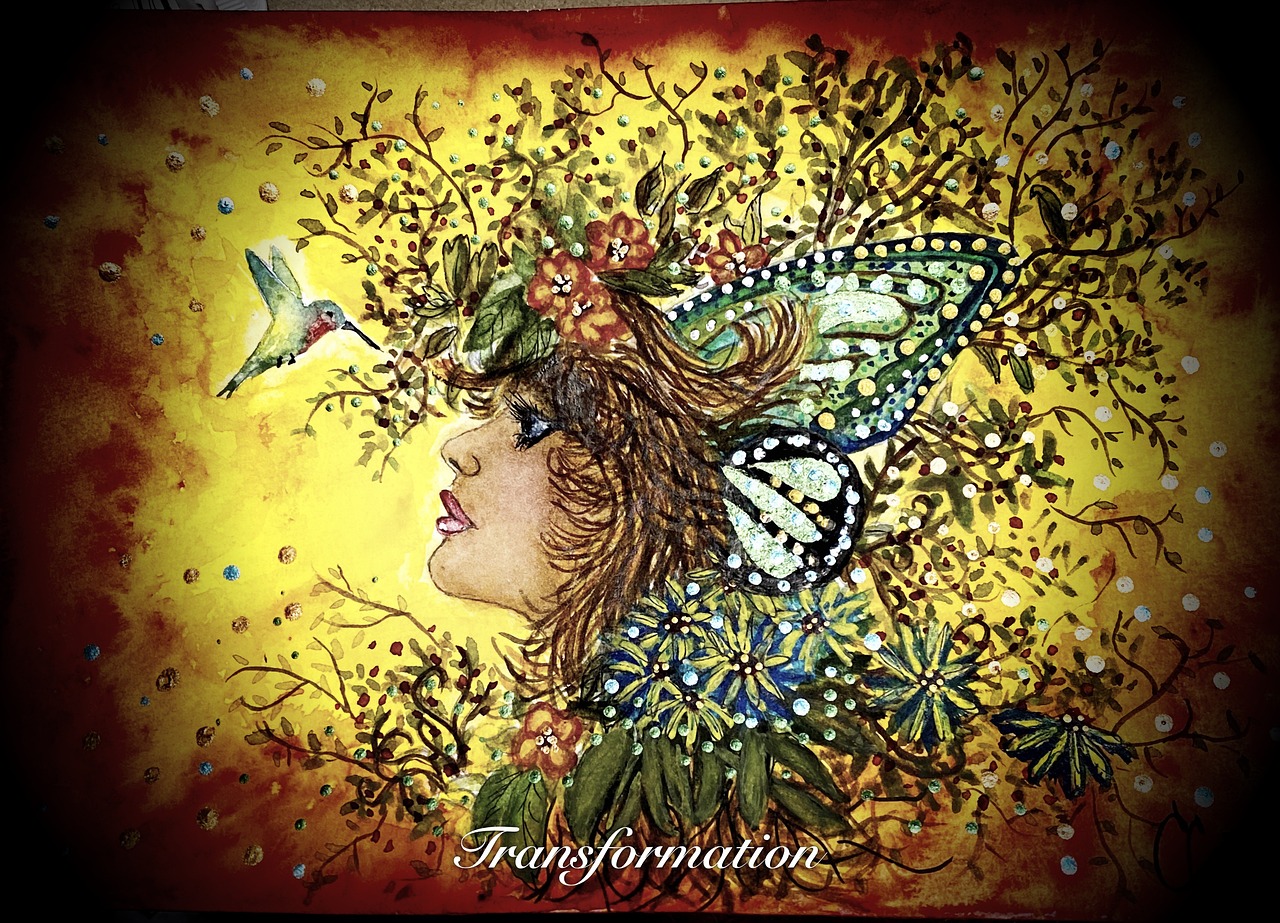
Cleaning Up and Maintenance
One of the most appealing aspects of water-mixable oils is their ease of cleanup. Unlike traditional oil paints that require solvents for cleaning, these innovative paints allow you to use just water, making the process not only simpler but also much safer for your health and the environment. To ensure your painting tools remain in top condition, it’s essential to follow some best practices for cleaning and maintenance.
After each painting session, the first step is to rinse your brushes thoroughly in warm water. This helps to remove the majority of the paint. Be sure to use your fingers to gently work the paint out of the bristles. Avoid using hot water, as it can damage the brush fibers. Once you’ve rinsed them, use a mild soap or brush cleaner specifically designed for water-mixable oils to give your brushes a deeper clean. This will help maintain their shape and prolong their lifespan.
When it comes to cleaning your palette, a simple wipe with a damp cloth usually does the trick if the paint hasn’t dried. For stubborn residues, you can use a palette knife to scrape off the paint gently before washing it with soap and water. If you’re using a wooden palette, it’s a good idea to apply a thin coat of mineral oil occasionally to keep the wood from drying out and cracking.
In addition to brushes and palettes, don’t forget about your painting surfaces. If you’re working on canvas or board, make sure to clean any spills or drips immediately with a damp cloth. This will help prevent any unwanted stains or textures from forming on your artwork.
To maintain your tools, regular inspections are key. Check your brushes for any fraying or damage, and replace them if necessary. A well-cared-for brush can make a significant difference in your painting technique and the overall quality of your work.
Lastly, if you’re using any mediums or additives, be sure to clean those containers as well. Residue left in these containers can affect the quality of your future mixes. A quick rinse with water should suffice, but make sure they are completely dry before sealing them again.
- Can I use regular oil paint brushes with water-mixable oils?
No, it's best to use brushes specifically designed for water-mixable oils to achieve optimal results. - What should I use to clean my palette?
A damp cloth works well, but for tougher spots, a palette knife and some soap can do the trick. - Are there any specific soaps recommended for cleaning?
Use a mild soap or a brush cleaner that is compatible with water-mixable oils for the best results. - How often should I clean my brushes?
It's best to clean your brushes after each painting session to maintain their quality.
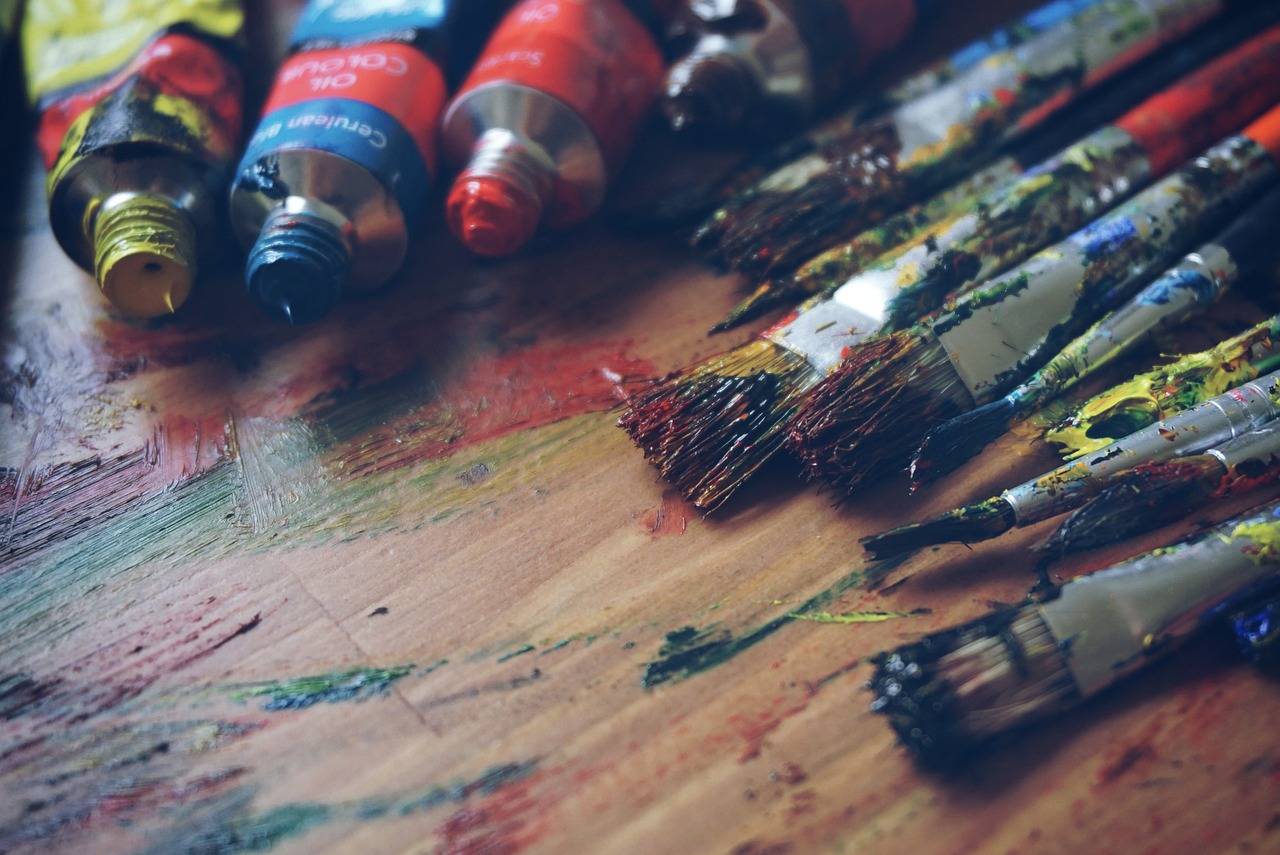
Storing Your Paints
Proper storage of your water-mixable oils is crucial for maintaining their quality and ensuring they are ready for your next masterpiece. Just like a fine wine needs the right cellar conditions, your paints thrive when stored correctly. First and foremost, you want to keep them in a cool, dry place away from direct sunlight. Sunlight can cause the pigments to fade and alter the consistency of your paints, leading to disappointing results on your canvas.
Another important factor to consider is the container in which your paints are stored. If you’re using tubes, make sure to close them tightly after each use to prevent them from drying out. You might also want to consider using a palette with a lid to keep your mixed colors fresh for a longer period. A sealed palette can be a lifesaver, especially during long painting sessions where you need to pause and come back without losing your carefully blended shades.
For those who prefer using jars or containers for their paints, ensure that they are airtight. You can even add a small piece of plastic wrap under the lid for an extra seal. This simple trick can significantly extend the life of your paints. Additionally, label your containers clearly. It’s easy to forget which color is which, especially when you're deep into your creative process. A quick glance at your label can save you time and frustration.
Here’s a quick overview of the best practices for storing your water-mixable oils:
- Temperature: Keep them in a cool, dry area.
- Light Exposure: Avoid direct sunlight.
- Container: Use airtight containers or tightly sealed tubes.
- Labeling: Clearly label your paints for easy identification.
Lastly, it’s a good idea to check your paints periodically. If you notice any changes in texture or smell, it might be time to replace them. Remember, your paints are an investment in your art, so treating them with care will pay off in the long run. By following these simple storage tips, you can ensure that your water-mixable oils remain vibrant, usable, and ready to inspire your next creative endeavor.
Q: Can I store water-mixable oils in the fridge?
A: While it's not necessary, storing them in a cool place like a fridge can prolong their life. Just make sure to let them return to room temperature before use.
Q: How long can I store opened tubes of water-mixable oils?
A: If stored properly, opened tubes can last for several months to a year. Always check for any signs of drying or separation before use.
Q: What should I do if my paint has dried in the tube?
A: If the paint has dried, it’s best to replace it. However, if it’s only slightly dried, you can try adding a few drops of water or a compatible medium to revive it.
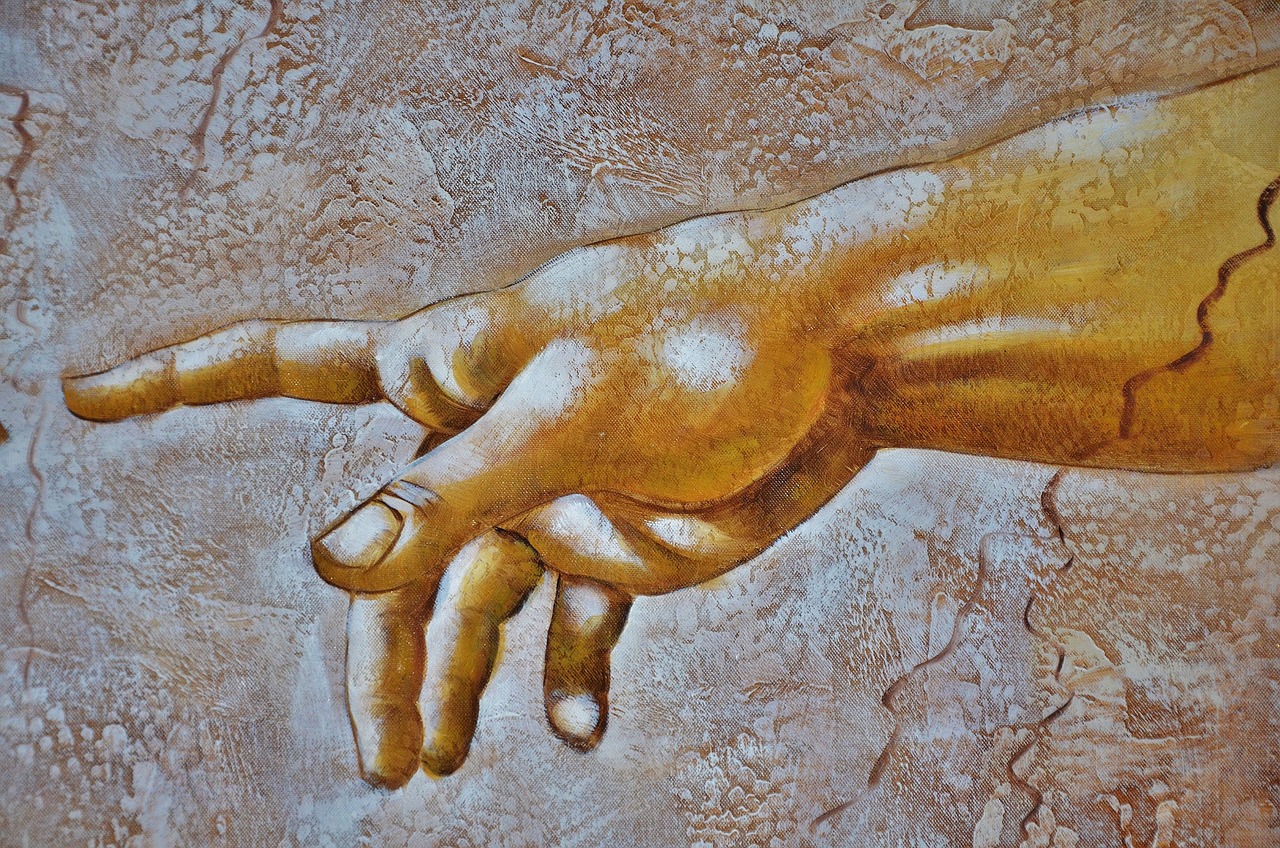
Common Mistakes to Avoid
When diving into the world of water-mixable oils, it's easy to get caught up in the excitement and overlook some essential practices. However, avoiding common mistakes can significantly enhance your painting experience and final results. One of the most frequent pitfalls is not properly understanding the water-solubility of these paints. While they can be mixed with water, using too much can dilute the pigments and lead to a washed-out appearance. It's crucial to find the right balance between water and paint to maintain vibrancy.
Another common error is neglecting the importance of layering. Many artists, especially beginners, rush through their work, applying thick layers without allowing previous layers to dry. This can cause colors to muddy and lose their intended impact. Remember, patience is key! Allow each layer to dry before applying the next; this can make a world of difference in achieving depth and richness in your artwork.
Furthermore, using the wrong tools can also lead to unsatisfactory results. For instance, opting for low-quality brushes might seem like a cost-saving measure, but it can hinder your ability to achieve fine details and smooth blends. Investing in high-quality synthetic brushes designed for water-mixable oils can significantly improve your technique and outcome. Additionally, it's vital to clean your brushes thoroughly after each session. Leaving paint to dry on your brushes can ruin them over time, making it harder to achieve the desired effects in your next painting.
Lastly, don't underestimate the power of experimenting. Many artists stick to the same techniques and methods, fearing the unknown. However, water-mixable oils offer a unique opportunity to explore and push boundaries. Don't hesitate to try different mediums or additives to see how they affect your work. Embrace mistakes as part of the learning process—after all, some of the greatest masterpieces were born from unexpected accidents!
As you embark on your journey with water-mixable oils, you might have some questions. Here are a few frequently asked questions that can help guide you:
- Can I use regular oil paint with water-mixable oils? It's best to avoid mixing traditional oil paints with water-mixable oils, as they have different properties and can lead to unpredictable results.
- How do I clean my brushes after using water-mixable oils? Simply rinse your brushes in warm water and soap, and they should clean up easily. Make sure to reshape the bristles afterward for longevity.
- Are water-mixable oils as durable as traditional oils? Yes, when used correctly, water-mixable oils can be just as durable as traditional oils, offering excellent color retention and longevity.
Frequently Asked Questions
- What are water-mixable oils?
Water-mixable oils are a type of oil paint that can be thinned and cleaned up with water instead of traditional solvents like turpentine. This unique property makes them more user-friendly and environmentally friendly, allowing artists to enjoy the richness of oil paints without the hassle of harsh chemicals.
- How do I choose the right brushes for water-mixable oils?
When selecting brushes for water-mixable oils, opt for synthetic brushes as they tend to hold up better with the water-soluble properties. Look for a variety of shapes like filbert, flat, and round to achieve different textures and effects in your painting.
- Can I use regular oil painting mediums with water-mixable oils?
No, it's essential to use mediums specifically designed for water-mixable oils. These mediums will help maintain the paint's water-soluble properties while enhancing drying times and texture. Always check the label to ensure compatibility.
- What techniques work best for blending and layering?
For effective blending with water-mixable oils, try using a wet-on-wet technique where you apply wet paint over wet paint. This allows for smoother transitions. Layering can be done by letting each layer dry slightly before applying the next, creating depth and richness in your artwork.
- How can I clean my brushes after using water-mixable oils?
Cleaning brushes is easy with water-mixable oils. Simply rinse them in warm water and use mild soap to remove any remaining paint. Make sure to reshape the bristles and lay them flat to dry to maintain their shape.
- What is the best way to store water-mixable oils?
To keep your water-mixable oils fresh, store them in a cool, dry place and ensure the caps are tightly sealed. You can also place them in a plastic bag or airtight container to prevent them from drying out.
- What are common mistakes to avoid when using water-mixable oils?
Some common mistakes include using too much water, which can dilute the paint's consistency, or not allowing enough drying time between layers. It's also crucial to avoid mixing regular oils with water-mixable oils, as this can lead to undesirable results.



















